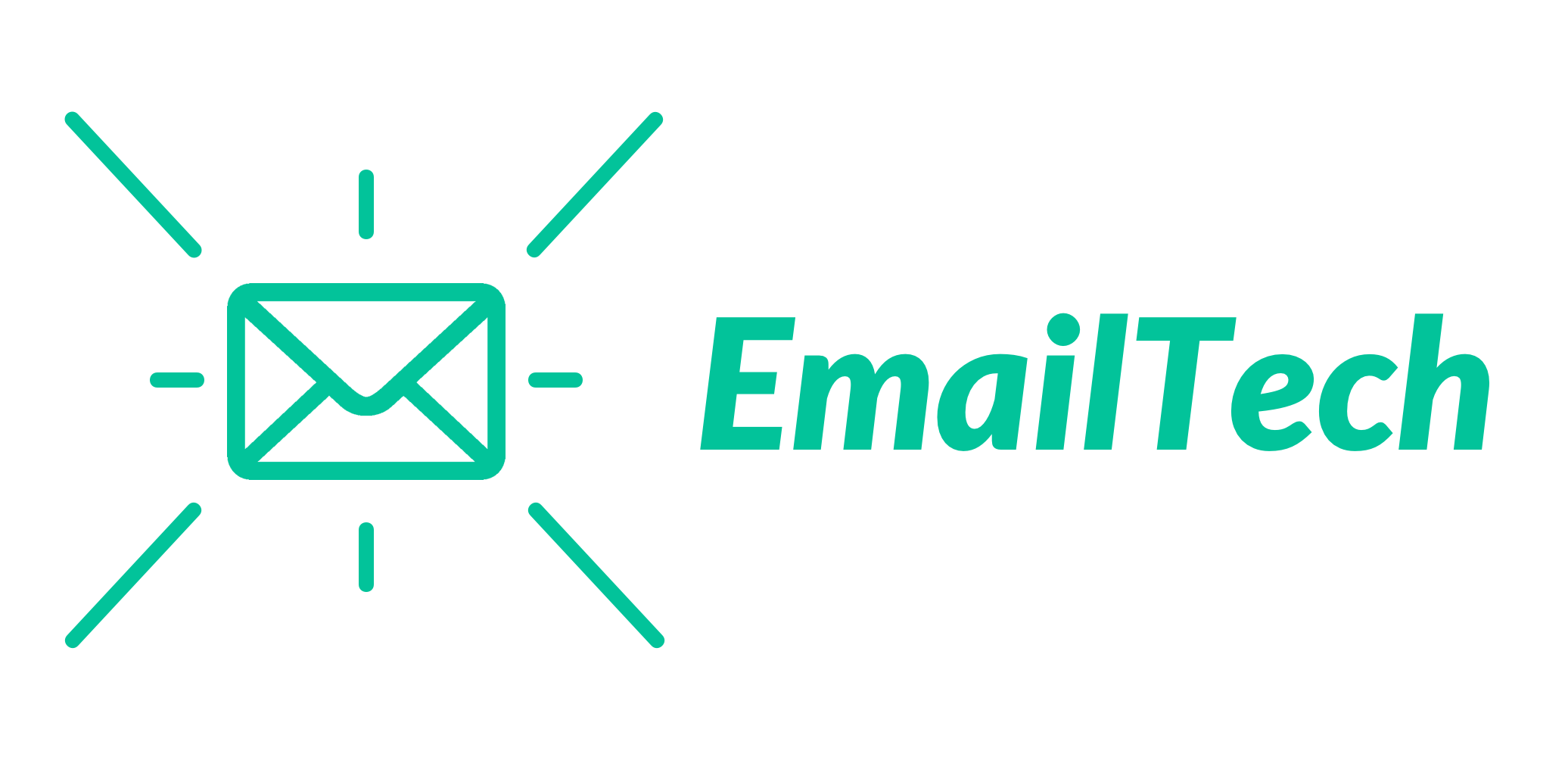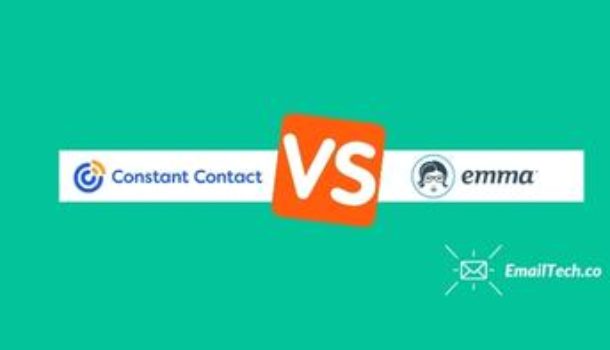With the right online marketing tool, you can get the most for your business – whether your priority is customer engagement, lead scoring, or revenue generation. However, you must choose the right tool for your business – whether it is a small start-up or an enterprise-level business. This is where the Constant Contact vs. Emma comparison jumps in.
Whilst they are both top rated online marketing tools, each platform carries its unique features. Thus, you want to evaluate the comparison to which one is better suited for your business. So, check out the in-depth breakdown of each feature offered by Constant Contact and Emma to find out which platform works best for your business.
Main Features
Whilst Emma is designed for all business types, Constant Contact works best for a smaller business. Constant Contact is curated for small businesses with teams of between 1 and 50 people. The platform utilizes specialized tools such as management tools, surveys, and social campaigns to garner effective results.
In fact, Constant Contact is specially built for businesses that frequently run events as it allows you to build multiple campaigns around invitations, registrations, and even, ticketing. Furthermore, the tool offers a selection of integrations with advanced event management apps.
To cater to the event management needs, the tool offers deep social media marketing features – which include Instagram and Facebook ads. Whilst it offers its fair share of email marketing features, Constant Contact is a website-building tool as well. It allows you to build your site and brand, sell online, and grow your subscriber list – although this package doesn’t offer specific email marketing features.
Emma on the other end is designed for teams with between 1 and more than 1000 individuals. It even comes with special packages tailored for franchises, restaurants, retail, fitness, non-profit, agencies, and educational institutions. Furthermore, in addition to email marketing features, Emma offers advanced automation and segmentation features – improving your overall business processes.
Winner: Constant Contact and Emma are email marketing features – nonetheless, their vast and unique features make them powerful in their own right – there isn’t telling which is better than the other when it comes to overall performance.
Design & Editor
The Constant Contact platform has an extremely easy to use and follow interface. With the myriad of tools it is equipped with, it allows you to build attractive and professional email campaign designs. If your business or company frequently sends out group emails, Emma is the tool you should go for.
Furthermore, through its drag and drop editor, you will have a selection of features to choose from to customize your campaigns – making full use of logos, headers, and footers. Furthermore, using the Emma editor offers great campaign personalization for a unique customer experience.
Emma’s email editor is pretty intuitive – allowing you to focus on the design and content to ensure your campaigns are not mere documents plastered on one’s screen. In partnership with Litmus, you can use Emma’s HTML template builder and email inbox previews to design, test, and send custom emails to your subscribers.
Winner: When it comes to email design and editor, Emma offers vast possibilities to personalize your campaigns. However, building campaign design can be a little difficult compared to simple editing of existing templates.
Marketing and Automation Features
Constant Contact and Emma offer some automation features. However, the Constant Contact automation and Emma automations are quite limited. Constant Contact covers basic email marketing automation. Whilst you will enjoy features such as trigger-based campaigns, it doesn’t offer the best list building and automation tools.
Some of the other key email marketing automation features you will enjoy from Constant Contact include welcome emails for new subscribers, contact segmentation, and resent emails to non-openers. The Emma tool is even more limited. Emma offers reasonable email marketing automation as well. Amongst the key features covered include trigger targeted messages based on subscriber activity and response to campaigns.
Winner: Both tools don’t offer the most powerful automation tools. However, looking at the Constant Contact vs. Emma comparison, the former offers a few more email marketing automation features.
Reporting
Constant contact offers basic reporting as well – allowing for real time tracking of email opens, clicks, and sharing. Constant Contact covers basic reporting and A/B testing only. Emma offers a robust analytics tool that tracks email campaign effectiveness. Using its analytics tool you will get insightful reporting rates through the responsive dashboard offering both rates and analytics.
On the dashboard, you can also make full use of the new mailing score metric that gauges your email performances and compares them against previous ones. The click map feature shows you where most of your subscribers access your campaigns – whether it’s through their phones or desktop. Similar to Constant Contact, Emma covers A/B testing whilst its reporting extends t its integrations as well.
Winner: Emma emerges as a winner – it doesn’t only cover basic reporting but comes with added features such as click maps and mailing score metrics.
Integration
Constant contact does a pretty good job in integrations. It facilitates data imports ad export. Furthermore, it also features a built-in API that allows for countless native integration. To allow it to achieve its event management and email marketing functions, the tool features deep CRM, social media, and Ecommerce integrations with tools such as Facebook and Shopify.
Emma also offers data import and export tools whilst accommodating more than 100 native integrations using its API with tools such as Eventbrite, Google Analytics, Shopify, and YouTube.
Winner: Both Constant contact and Emma offer reasonable integrations.
Deliverability
Constant Contact offers average deliverability rated of 97%.To be able to achieve this high rate, the platform uses a selection of tools. Amongst them include proactive monitoring feedback analysis, authentication, blocklists, and compliant/account reviews. With proactive monitoring, the tool monitors contact list signups, list uploads, and content to look for suspicious activity – ensuring the network is clean and emails are kept out of spam filters.
Registered by major internet service providers, the platform receives reports from feedback loops and whitelists. Using DKIM, SPF, and SenderID Constant Contact automatically authenticates all customer mail whilst supporting the set up of D-MARC authentication if needed.
In case Constant Contact IP addresses are listed, the deliverability team works to relists them, diagnoses the cause, and solves the problem. Furthermore, the tool has a dedicated compliance and account review team to monitor any fraudulent activity, compromised accounts, or spam-related abuse.
Emma has an average deliverability rate of 96%. Similarly, it integrates a list of deliverability best practice tools to keep the rates high. For one, the tools offer a DKIM authentication setup. Additionally, it integrates other tools such as telling if your contact list is good or not, identifying and removing spambot signups, and offers a heap of other resources to teach its users how to improve deliverability rates and lower the chances of their campaigns ending up in spam boxes.
Winner: Constant Contact does a better job at deliverability – with higher rates and more variety of deliverability guaranteeing tools.
Pricing
Constant Contact doesn’t have a subscriber list cap – but, as the list grows, the more you pay. With a large number of subscribers, you can even curate your package and receive a quoted monthly price. The tool doesn’t have a free plan but, it offers a free 30-day trial. Furthermore, it comes with two key plans – i.e. Email and Email Plus plan.
The email plan costs a minimum of $20 per month for 500 contacts and is tailored for small businesses that want to create professional email campaigns for their subscribers and grow their list. The Email Plus plan on the other end costs a minimum of $45 per month for 500 contacts and is designed for small to large-sized businesses that want to enjoy better email marketing automation features.
The tool also offers special discount prices for nonprofits. If you want to use the website building tool that Constant Contact offers, you will also pay a minimum of $10 per month. This cost allows small business to build their site and brand, sell online, and grow their customer size.
Emma on the other end offers three key plans – i.e. Pro, Plus, and Emma HQ. The Pro plan is designed for small businesses and costs a minimum of $89 per month with a single user and 10,000 contacts. The Plus plan is designed for high performing markets and costs a minimum of $159 per month for 10 users and 10,000 contacts.
The Emma HQ plan is built for large businesses such as brands and franchised businesses managing email programs from a single corporate account. This plan costs a minimum of $279 per month with unlimited users and 10,000 contacts.
Per monthConstant Contact EmmaContacts/Plans0-500Contacts/Plans0-10,000Email$20Pro$89Email Plus$45Plus$159Emma HQ$279
Winner: Whilst Emma appears to have a higher price, it is still much more affordable. After all, its pricing offers up to 10,000 contacts compared to Constant contact’s 500 subscribers – making Emma the winner for best pricing.
Customer Support
Constant Contact offers an extensive knowledge base with how-to articles, guides, and video tutorials. You can even find answers, ask questions and give feedback in the tool’s user community and social media – especially Twitter. Live chat, phone, and email support are also available. Constant contact also supports other languages – including Danish, German, French, Italian, Dutch, Norwegian, Portuguese, Spanish, and Swedish.
Emma offers a cross section of customer support options. You can choose to access the knowledge base by topic or even watch video tutorials. Furthermore, you can access chatbot support through the icon on the screen. Additionally, each plan offers both email and phone support for one on one support.
Winner: offering a reasonable scope of support, both platforms do an excellent job in customer service and support. However, with extra resources and available in a selection of other languages, Constant Contact takes the lead.
Feature Comparison
When looking at the Constant Contact vs. Emma comparison, each tool brings great value for an ecommerce business. Nonetheless, each tool is equipped with its own features that make it stand out. In the feature summary below, you will be able to see where each tool is the strongest.
Constant ContactEmmaMain features 4.74.7Design and editor4.54.6Marketing and automation features4.34.2Reporting4.04.2Integration 4.74.7Deliverability4.84.7Pricing4.54.7Customer Support4.94.84.554.58
Which Is Better – Constant Contact Vs. Emma?
As mentioned above, the Constant Contact vs. Emma comparison helps to map out their distinctions as well as their similarities. You will find that as email marketing tools, they bear a range of similar tools and features. However, Constant Contact and Emma are also quite different from one another. The most essential difference you will notice from the get-go is that Constant Contact is better curated for small businesses, whilst Emma works for businesses of all sizes.
As evident to this, you will come across their pricing difference. Whilst Emma may appear to have higher rates at face value, it is still quite affordable compared to Constant Contact. After all, its base pricing is quoted per 10,000 contacts whilst Constant Contact is priced per 500 contacts.
However, this is only useful for medium to large businesses – as a small business, even though the plan offers more contacts, it will still be expensive and impractical as your business will not have the 10,000 contacts that you pay for. Beyond the pricing, each tool is optimized to meet certain needs.
For example, if you want to get more creative and autonomous with your designs, Emma’s HTML-coded template builder makes it a better choice – keep in mind, however, you want to have a little more tech knowledge. Again, feature richness plays a role in your decision, but, in general, you also want to look at the marketing tool as a whole.

